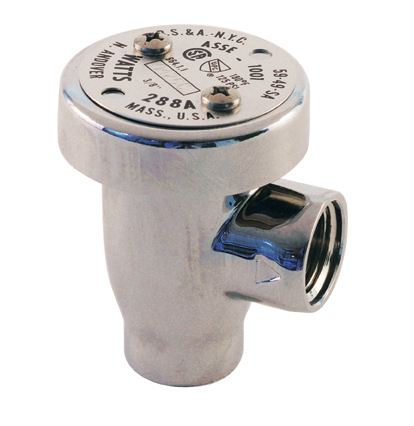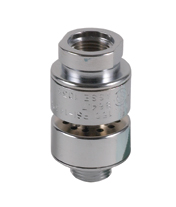Vacuum breakers and backflow valves are an easy thing to overlook in your restaurant’s kitchen. They are relatively easy to install, and since health inspectors are going to require them, there’s no reason why you shouldn’t take the time to make sure you have some of these simple plumbing parts installed correctly in the right places in your establishment.
First things first: what the heck is a vacuum breaker and a backflow valve? Both prevent potentially contaminated water from flowing back up a hose, faucet, pre-rinse, or toilet fixture and into the potable water system in your restaurant. Waste and sewage water is rich with microorganisms that can quickly infect an entire water supply, and that’s why these plumbing valves are so important.

Vacuum breakers – a rubber diaphragm inside this valve opens when water goes out but seals shut when a faucet is turned off, which prevents a vacuum inside the line to suck contaminated water back up into the plumbing system. Over time this rubber diaphragm wears out and loses its seal. Fortunately this is easy to replace, saving you the expense of ordering a whole new vacuum breaker.
Check with your local health department for a complete list of places where a vacuum breaker is required. The most common fixtures are mop bucket sinks, pot filler assemblies, commercial dishwasher lines, pre-rinse assemblies (in addition to a continuous pressure backflow valve), and toilets and urinals.

Backflow valves – these metal valves have a spring loaded ball inside that is forced open when water pressure flows out of the line. When a faucet or pre-rinse is shut off, the ball seals shut, preventing any contaminated water from flowing back up the line. A backflow valve is most commonly seen on pre-rinse assemblies and faucets with a hose attachment. Note that most pre-rinses should also have a vacuum breaker.
These simple plumbing parts can play a big role when it comes to passing a health inspection, so make sure your kitchen is up to code. Even more importantly, these valves prevent contaminants from getting into your water supply, which could cause a huge headache down the road. An ounce of prevention is worth its weight in gold when it comes to vacuum breakers and backflow valves.
 Corner Booth Blog | TundraFMP Restaurant Supply, News & Equipment Blog
Corner Booth Blog | TundraFMP Restaurant Supply, News & Equipment Blog



